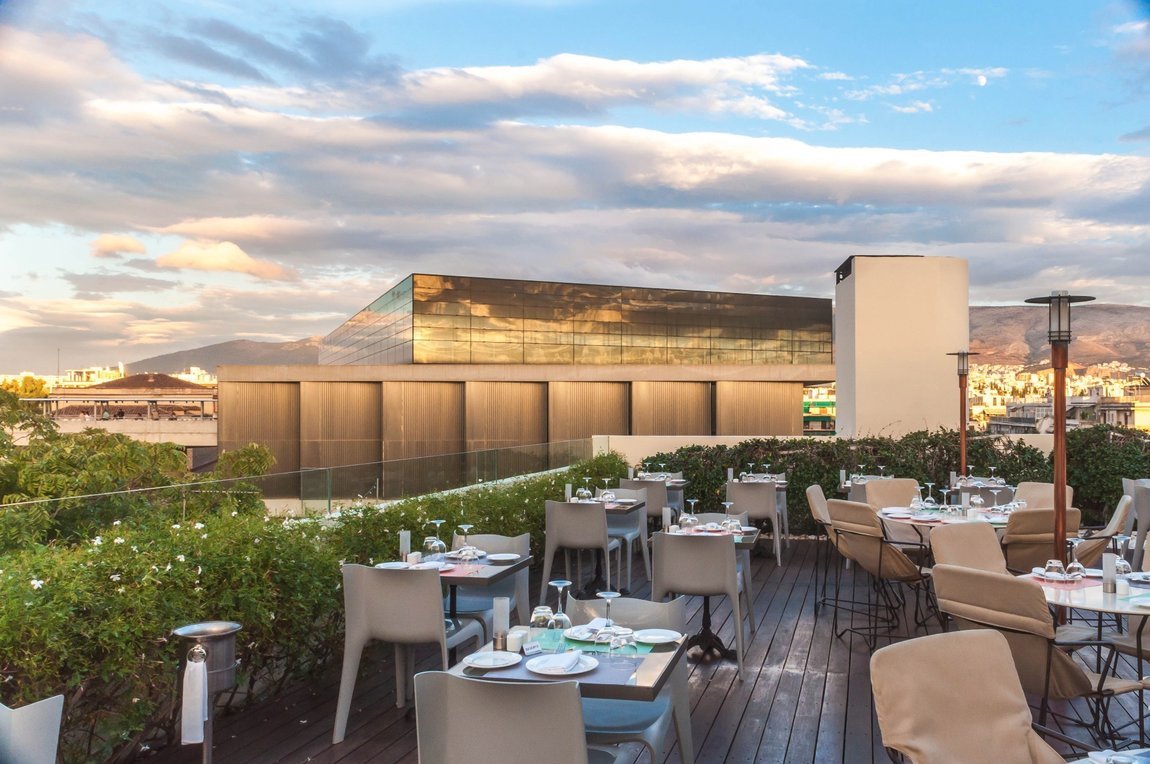Our Blog
Welcome to our Neighborhood
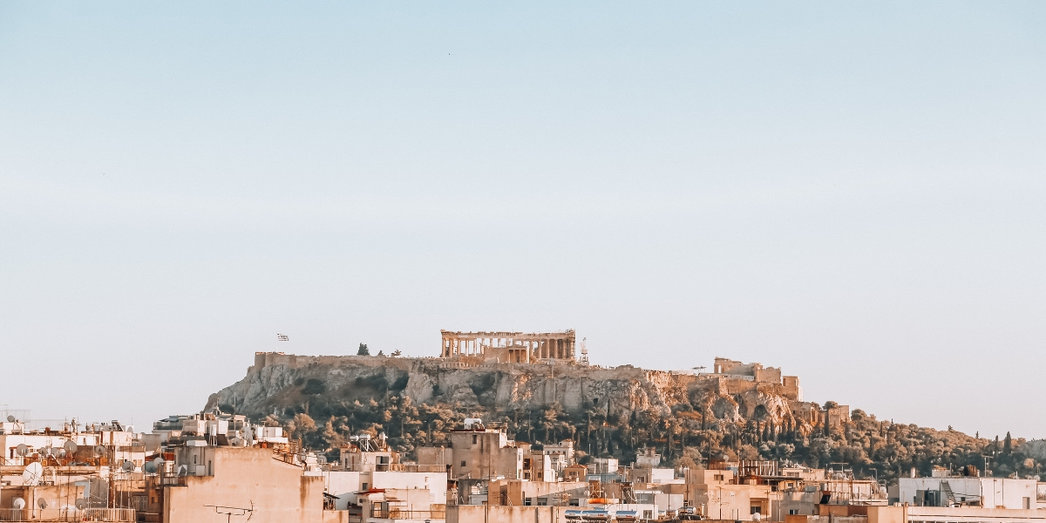
We’re on the Doorstep of Greek History!
The Philippos Hotel Athens is ideally situated in one of the most elegant and residential areas of
Athens called Makrygianni, a verdant and pedestrian friendly neighborhood just below the Acropolis and virtually next door to the Acropolis Museum. Despite the presence, however, of these two tourist-popular landmarks, the area remains remarkably mellow and perfect for long walks and lingering at stylish cafés.
The Best of Both Worlds
You will immediately notice how Makrygianni is simultaneously very cosmopolitan and old world at the same time. This is perhaps the secret to its addictive allure. Apart from the Unesco World Heritage site of the Parthenon, the renowned Acropolis Museum, the Dionysus Theater, and the Herodes Atticus Theater, Makrygianni is surrounded by small art museums, tasteful galleries, a string of cafés’ with Left Bank charm and literary-chic, excellent restaurants, elegant stores, stately historical homes of architectural interest, and beautiful, culturally seeped walking paths.
A Vista That Spans Centuries of Civilization
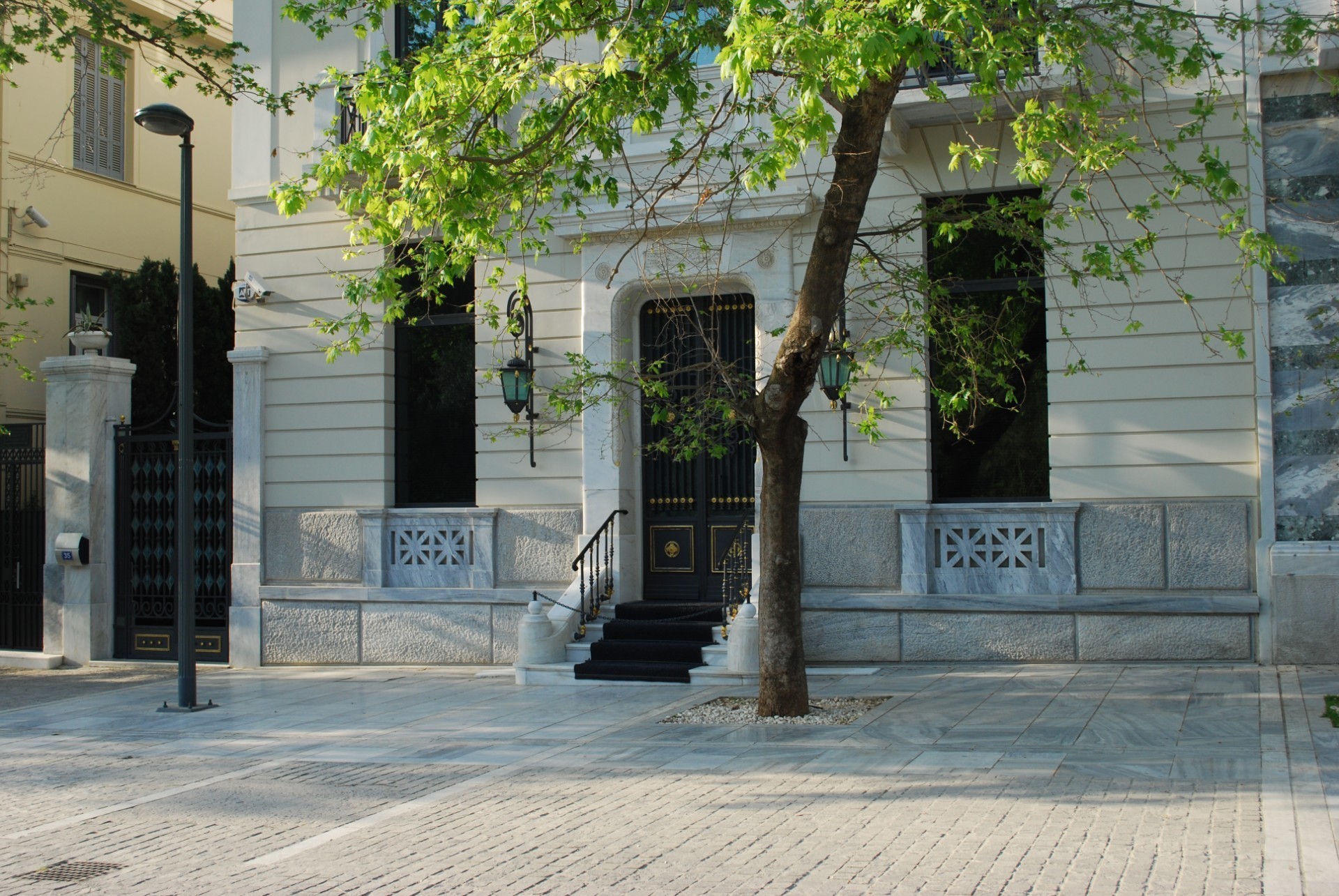
Let’s begin with the wide pedestrian street of Dionysiou Areopagitou, the longest pedestrianized walkway of Athens. In 1833, two very gifted architects had a vision to unify the archaeological sites of Athens. Kleanthis and Schauburt wanted to offer a vista that spanned centuries of civilization. The single walkway through Dionysiou Areopagitou, Apostolou Pavlou and Ermou is one of the most significant architectural achievements of modern Athens and is like an enormous open-air museum.
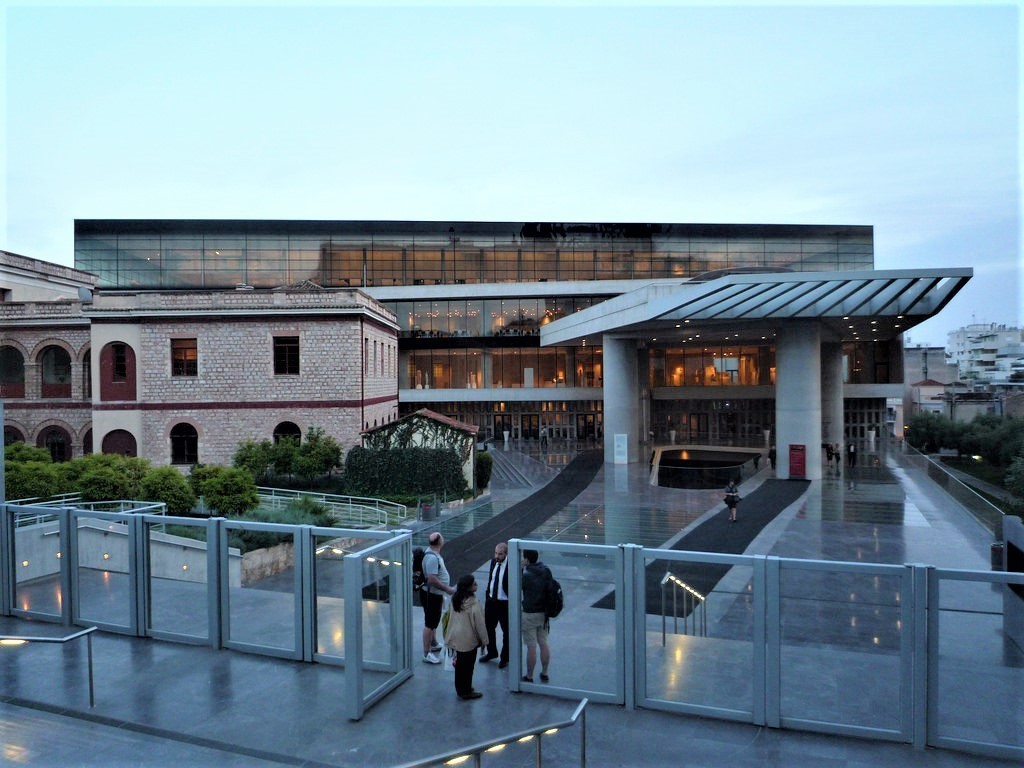
Archaeology buffs will head straight for the Acropolis, and the Acropolis Museum right after checking in. You don’t have to be an archaeology buff, however, to want to marvel at one of the world’s masterpieces. Visiting the Acropolis one is left breathless by the sight of this extraordinary structure, its simple lines, its wealth of sculptural decoration and the brilliance of its marble under the blue Athenian sky. It is the same sensation that the temple caused to the European travelers of the 18th and the 19th centuries, feelings they expressed through their paintings, travelogues and poems.
A. W. Lawrence once wrote about the Parthenon that it is “the one building in the world which may be assessed as absolutely right.” So the structure that would house the masterpieces of this building must be worthy in beauty as well as form. We believe that it is both. Designed by the French-Swiss architect Bernard Tschumi, the New Acropolis Museum rests on 100 huge reinforced-concrete pillars, which allow you to survey the remnants of villas, drains, bathhouses, and mosaics of the recently unearthed neighborhood below. Much of the ground floor is made of glass so that natural light filters down to these excavations and gives the effect of transparency throughout. And when you raise your head, you see the mother-ship, the Parthenon in all its glory, perfectly aligned in scale and perspective.
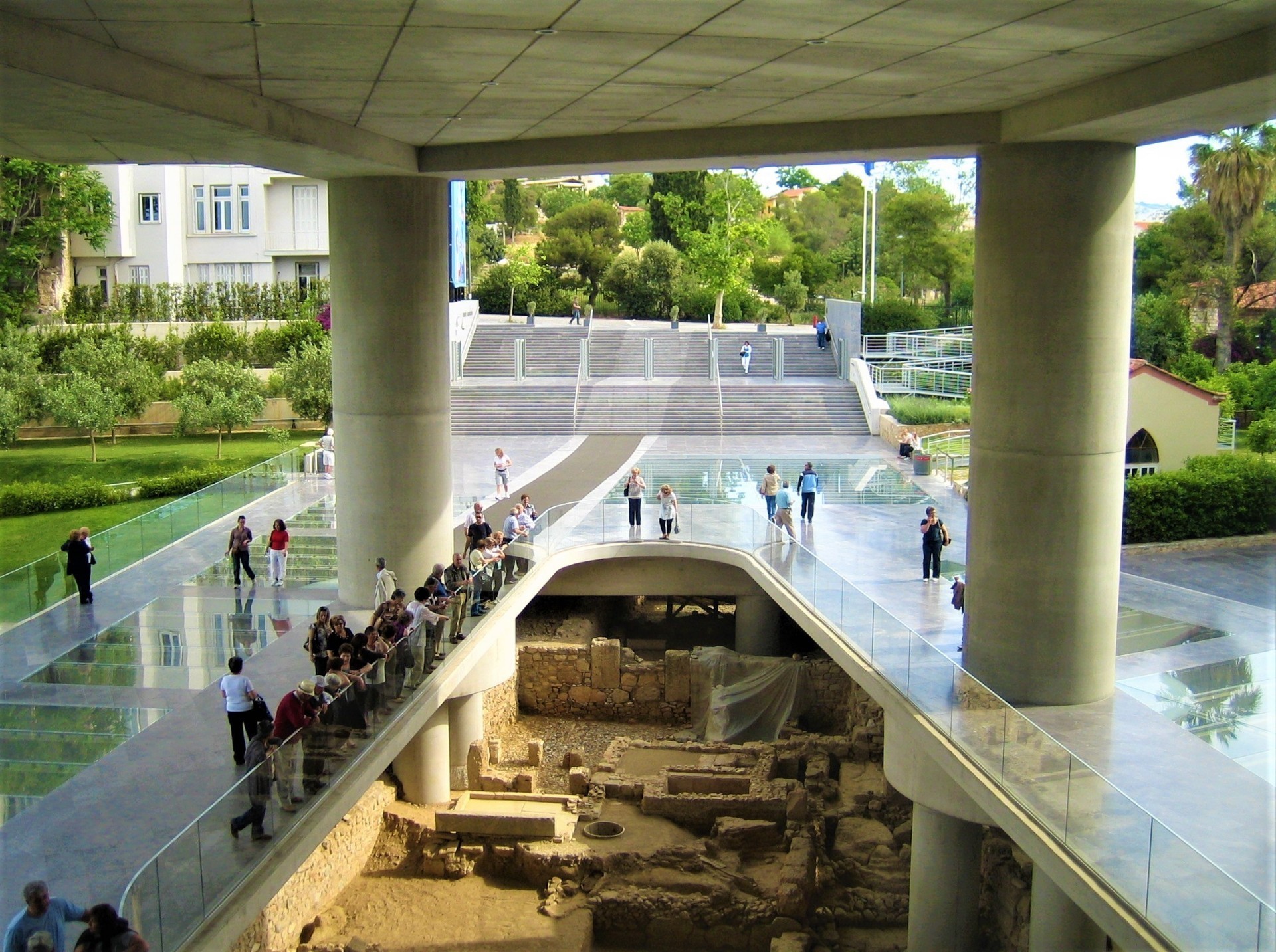
The petite Ilias Lalaounis Jewelry Museum showcases 40 years of ornately crafted pieces by the famous Greek jewelry designer that are works of art unto themselves, with themes of Greek cultural history and nature. His pieces have adorned famous personalities through the years.
Where the Dramatic Arts Were Born
The blend of greenery, archaeological landmarks, and stately neoclassical homes dating from the 18th century make Dionyssiou Aeropagitou a perfect choice for year-round promenades. Tucked away in a little shady, square, next to the statue of Makriyiannis, the street’s namesake and a
Greek Independence War hero, hides the entrance to the most ancient theater in Europe; the Theatre of Dionysus. It was the first theatre ever built, cut into the southern cliff of the Acropolis, and the birthplace of Greek tragedy and in its time staged plays by Sophocles, Euripides, Aeschylus, and Aristophanes.
A Labor of Love
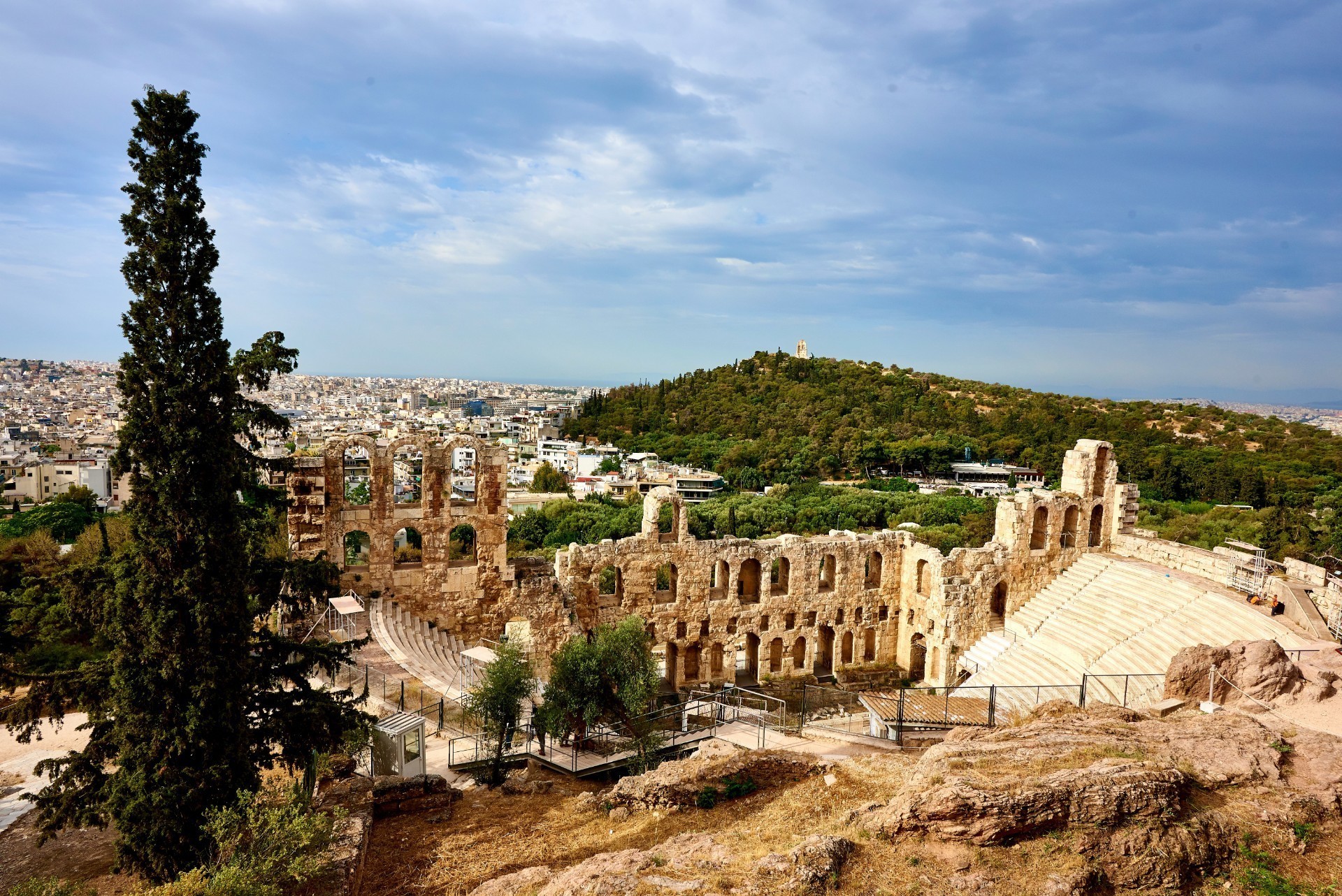
The Herodes Atticus Roman amphitheater, known locally as the Herodion, lies at the base of the southern slope of the Acropolis. It dates from the 2nd century AD and is literally minutes away from the Philippos Hotel. It was built by an extravagantly rich Athenian philosopher, Herodes Atticus, in memory of his wife Regilla. Until spring, it is just another superbly designed archaeological site that pedestrians walk past on their way to the Acropolis and the Acropolis Museum. Starting from June 1st until mid to late July, however, it is a primary venue for the Athens Festival, Greece’s foremost cultural event, and comes alive with top of the line performances and thousands of visitors.
Makrygianni makes it hard to believe that you are in the center of Athens, but you are indeed.
Give yourself the best of both worlds when you choose to stay at Philippos Hotel Athens.





